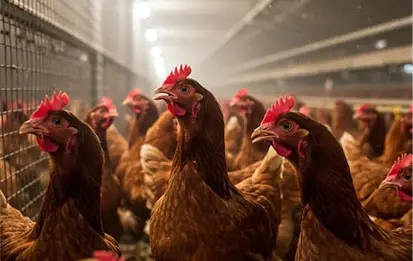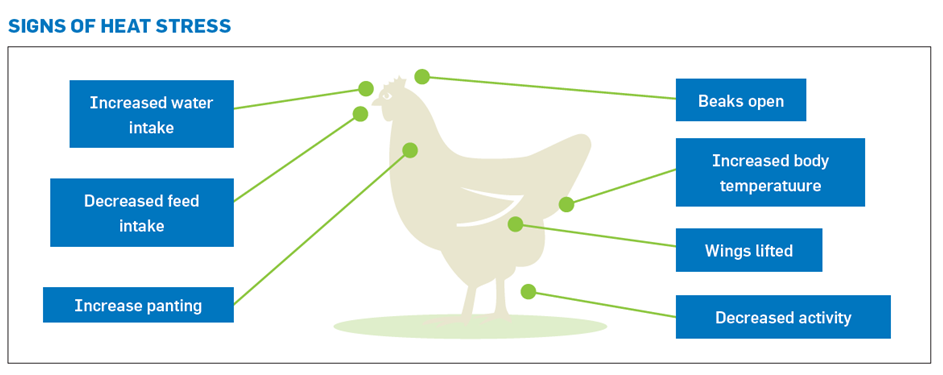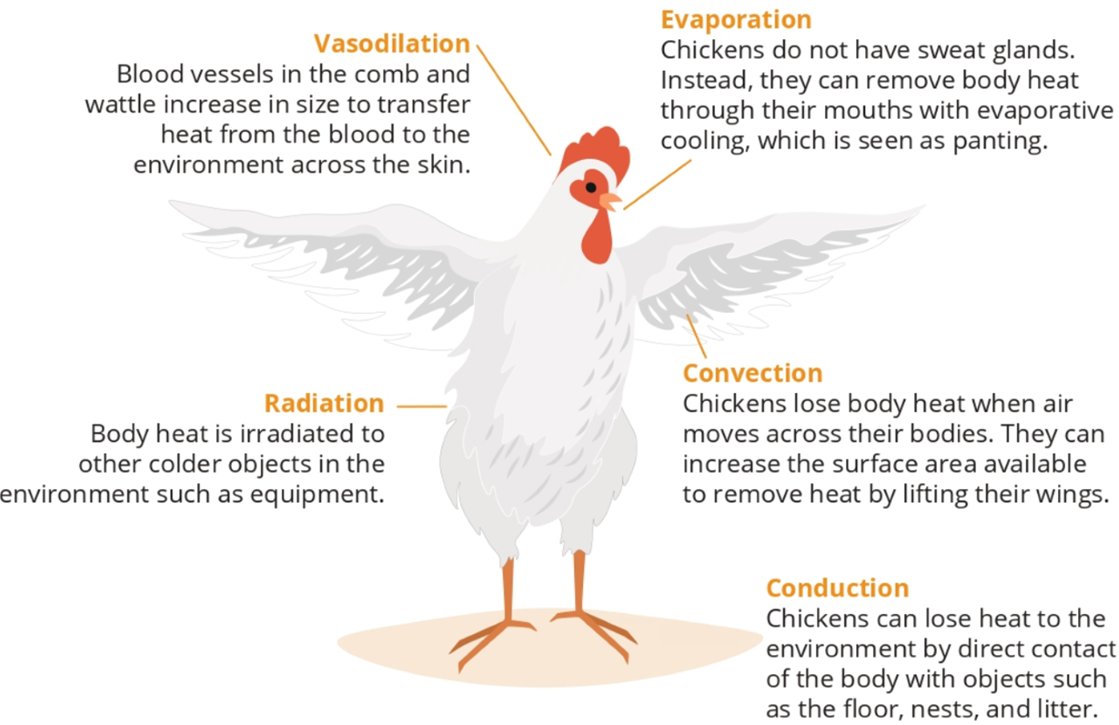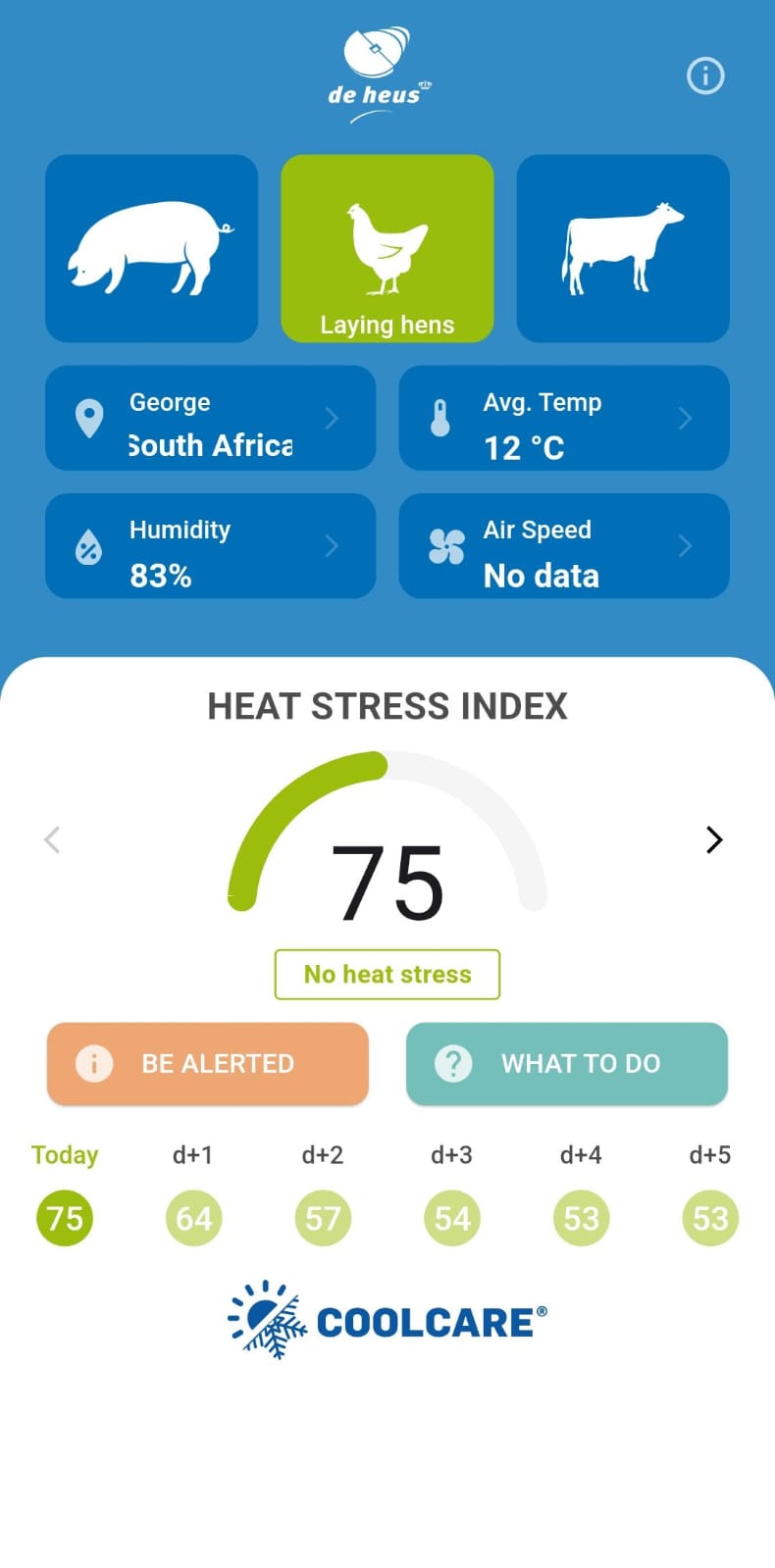Are panting hens impacting your On-Farm performance?
South African summers are welcomed by many locals and tourists each year for those who seek out the sun, longer days and warmer temperatures. When the heat rises though, so do the challenges for our poultry farmers. This past summer season was no different. In South Africa’s relentless summers, managing heat stress in commercial layer farms can become very challenging, with major economic consequences. Even for egg producers along the coast — lower maximum temperatures might be observed than inland, but higher humidity levels contribute to heat stress during the summer months. This can profoundly affect the productivity of a flock, and in extreme cases lead to high mortality rates as well. It is very important to try and manage our layer operations to support birds during these warmer periods. With specific management practices, this can be possible

What is heat stress?
Poultry function optimally in what is called the thermoneutral zone (TNZ) or comfort zone. This is the range of ambient air temperature, at bird level, within which a bird can maintain its normal body temperature. For chickens, the TNZ is between 18–26°C. To keep the body temperature within the normal limits, a continuous energy exchange takes place between the animal and the environment.
Heat stress occurs if this heat exchange becomes more difficult due to environmental factors (such as temperature, humidity and air speed). When heat production by birds and the environment is greater than heat lost, the core body temperature rises.
Measuring the rectal temperature can give you an accurate indication of the level of heat stress. An ideal rectal temperature for a chicken is 40.2-40.8°C, and temperatures that are above 41.1°C indicate heat stress. Birds will show behavioural signs in response to heat stress.
Recognizing heat stress in chickens:
It is very important to keep a close eye on birds before and during warm periods to detect early signs of heat
stress. These signs include:
• Open-mouthed breathing, shallow panting
• Decreased activity
• Decreased feed intake
• Increased water consumption
• Swollen wattles and combs
• Raised wings
• Decreased egg production
• Decreased egg and eggshell quality
• Spike in mortality


Table 1: Comfort Zone Temperature ranges for poultry
Why do chickens behave this way?
Chickens lose body heat through five main mechanisms: radiation, evaporation, convection, conduction and vasodilation.

Consequences of heat stress
While a drop in egg production and an increased risk of fatalities within a flock might seem like the most apparent
consequences of heat stress are also other concerns.
Behaviour
In commercial systems, especially, the risk of behavioural issues such as cannibalism, feather and vent pecking increases when birds experience heat stress. This can lead to injuries, decreased welfare and an increased risk of infection.
Immunity
Immunosuppression occurs during heat stress due to stress hormones in the blood and activated heat shock proteins. Certain gene functions can be disrupted, and birds become much more vulnerable to different types of diseases.
Egg Quality & Size
Heat-stressed hens produce eggs with lower albumen quality (Haugh units decrease). Lower feed intakes and
less nutrients allocated for production can lead to reduced egg size, especially during chronic heat stress periods.
Shell Quality
Eggshell thickness and shell strength decrease significantly during periods of heat stress, resulting in a higher occurrence of cracked eggs. How does this happen? Panting and gular fluttering increase the respiration rate of the animal, releasing carbon dioxide (CO2), loss from the body, leading to a change in their blood pH and potentially affecting eggshell formation. This condition is called respiratory alkalosis. The higher the blood pH, the lower the amount of ionic calcium (Ca²⁺) in the blood. Ionic calcium is the calcium used by the shell gland that produces the eggshell.
When feed intake decreases due to heat stress, phosphorous intake also decreases also contributing to the production of poor and fragile shells.
Dirty Eggs
Increased water intake and decreased feed intake result in watery droppings and sometimes diarrhoea. This will lead to an increased number of dirty eggs coming through the system.
Fertility
In parent stock flocks, studies have shown a significant decrease in fertility during heat stress as well as decreased hatchability of incubated eggs.
Management options to mitigate heat stress
Good management practices include attention to all aspects of layer production to help manage and reduce heat stress experienced by the birds. This includes physical handling and vaccination, ventilation management, feeding times, lighting schedules, stocking densities, water management and nutritional supplementation. For a technical breakdown of the above, please do not hesitate to contact a De Heus technical advisor.
De Heus Cool Care App
The Cool-Care smartphone application is an easy-to-use tool that can help identify possible heat stress scenarios on a farm. It provides predictions based on location and approximate weather conditions, as well as tailored heat stress indexes based on different livestock species. There are helpful tips and advice available as well.


Poultry farmers should be conscious and vigilant about maintaining environmental temperatures according to the requirements of the birds, especially during the summer. It has been proven that layer birds show a significant decrease in feed intake, egg production, egg weight, eggshell thickness, eggshell weight, Haugh unit and eggshell strength.
For any technical and nutritional assistance, please contact your De Heus technical advisor - https:// www.deheus.co.za/meet-our-team/.
